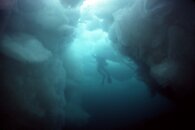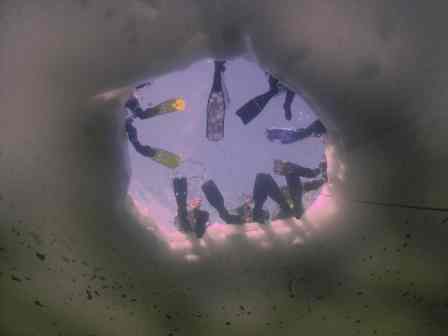- Messages
- 14,180
- Reaction score
- 11,412
- Location
- Port Orchard, Washington State
- # of dives
- 1000 - 2499
So imagine dropping that 400ft reel there in 100ft of water in the silty dark. The impact with the bottom raises a giant poof of silt. Reel sinks into the goo and is "gone"Cave experience and ice diving.... worth watching
Good thing at least one of you is on CCR because the only way to make it home is to attempt to reverse course on the compass, fan out and look for the line laying on the bottom. The CCR person at least has hours to look. And hope that line isn't just a thin linear divot in the silt assuming you even swim over it at all.
This is not a good example and should not be emulated.







